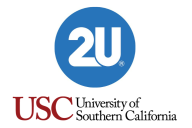You have /5 articles left.
Sign up for a free account or log in.
At the very moment when historical clarity—which the recent Supreme Court decision contradicted—is urgently needed, John R. Thelin and Richard W. Trollinger Trollinger turn to clever but misleading rhetoric in their "Selective Admissions on Trial" (July 31).
To begin with basics, "selective admissions" were not on trial: the explicit use of race was. "Selective admissions" in its many forms remains legal. So-called "Legacy Admissions" as well as athletes and National Merit Semifinalists and Scholars are among the forms.
Thelin, a historian of higher education who mentions both "admissions policies" and "affirmative action" in his A History of American Higher Education (2nd ed., 2011). should know the differences.
But other significant issues must be emphasized.
First, Harvard did not invent "selective admissions." No single university or college can claim credit for that. Harvard is not a singular example for other private or public universities. Equally selective universities have had similar and different practices both explicit and often unadmitted.
Thus, Harvard was neither a pioneer not an exemplar that was followed or copied as these authors assert with no evidence.
Second, between the now challenged in a lawsuit and heading to court "legacy admissions" and "admission by donation, "selective admissions" continue to ride high. The overarching category has never been "on trial." Among prominent examples is Trump son-in-law Jared Kushner's New York property developer father's buying his unqualified son's admission to Harvard with a several million dollars "gift" (just prior to Kushner Senior entering prison).
Harvard's "Plan" was much more self-promoting rhetoric than either "blueprint" or a model to follow for anyone to follow.
The case against Harvard purportedly for "discriminating" colloquially against "Asian American" applicants was initiated and led by Edward Blum's Students for (Un)Fair Admissions. It was not first launched or relentlessly propelled by Asian American students or families themselves. That is part of Blum's career-long subterfuge.
"Asian Americans" do not exist as a singular group. They range widely in ethnicity, family wealth, and other factors.
Finally, neither Blum nor his paid sociologist "researchers" in California have produced the data set that they claim sustains their assertions. Many public and private groups have asked for it. Its existence is questionable.
Right-wing provocateur, who is responsible for removing limits on campaign contributions, Blum now has set his sights on eliminating race-based affirmative action at national military academies.
Tragically, neither the present Supreme Court nor Thelin and Trollinger are interested in critical distinctions or basic facts.
--Harvey J. Graff
Professor Emeritus of English and History
Ohio State University





